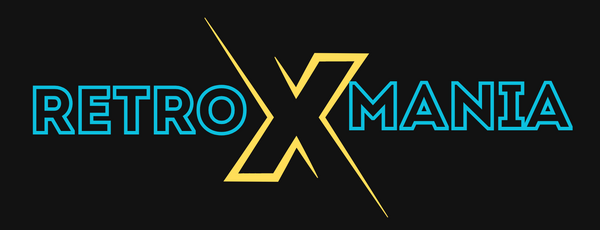USB (Universal Serial Bus) is the most widely used standard for connecting and transferring data between devices (computers, smartphones, storage devices, etc.). Since its launch in the late 1990s, this technology has evolved, offering increasingly faster transfer speeds and expanded functionality . In this article, we review the main USB interfaces (2.0, 3.0, 3.1, and Type-C), highlighting the importance of USB 3.0 for its versatile and fast use.
1. USB 2.0: the historical basis
- Maximum theoretical throughput : up to 480 Mb/s (60 MB/s)
- Launched in : 2000
- Main advantages :
- Near universal compatibility
- Low manufacturing and purchasing cost
- Boundaries :
Limited transfer speed for large files (HD videos, games, etc.)
USB 2.0 is still found on many older devices (PCs over 10 years old, small printers, etc.). However, if you transfer large files on a daily basis, a newer standard will be more suitable to avoid slowness.
2. USB 3.0: the versatile reference
- Maximum theoretical throughput : up to 5 Gb/s (640 MB/s)
- Launched in : 2008
- Main advantages :
- Speed up to 10 times faster than USB 2.0
- Backward compatibility: works on a USB 2.0 port, although at a reduced speed
- Ideal for quickly transferring photos, HD videos and other large files
- Boundaries :
- Throughput dependent on hardware configuration (hard drive, processor, etc.)
- May be slower if the USB cable or port used is not 3.0 certified
Today, USB 3.0 is considered an excellent compromise between speed, compatibility, and cost. For example, at Retroxmania, we offer a Lenovo USB flash drive with a 3.0 interface . It offers fast transfers while remaining affordable for most users.
3. USB 3.1 (Gen 1 and Gen 2): the boosted version
-
Maximum theoretical flow rate :
- USB 3.1 Gen 1 : 5 Gb/s (similar to USB 3.0)
- USB 3.1 Gen 2 : up to 10 Gb/s (1250 MB/s)
- Launched in : 2013
- Main advantages :
- Double the top speed for Gen 2
- Improved power management (faster charging)
- Boundaries :
- The “Gen 1” / “Gen 2” distinction can be confusing
- Not all equipment (PC, cables, devices) is Gen 2 compatible
USB 3.1 Gen 2 is particularly useful for demanding applications (large video edits, frequent backups, etc.). However, if your hardware doesn't support 10 Gbps, the actual speed will be closer to USB 3.0.
4. USB Type-C: the new generation connector
- Main features :
- Reversible connector : plugs in either direction
- Can support USB 3.0, 3.1, 3.2 and even beyond, depending on specifications
- Enables fast charging (up to 100W) via the USB Power Delivery standard
- Can carry video (DisplayPort, HDMI in Alt Mode)
- Main advantages :
- Versatile: one type of cable for multiple uses (data, charging, video)
- Compact and increasingly common on recent devices (smartphones, ultrabooks)
- Boundaries :
- Sometimes requires adapters to work with USB-A (classic) ports
- Not all Type-C cables offer the same speeds (check the actual standard)
Important to note: "Type-C" refers only to the connector shape , not the speed. So, a Type-C USB flash drive could be USB 2.0, 3.0, or 3.1 . So be sure to check the USB standard , not just the "Type-C" label.
5. Our USB A → USB C adapters
To facilitate the transition to Type-C, Retroxmania also offers adapters that transform a USB A (classic) port into a USB-C port . This allows you, for example, to use a USB 3.0 flash drive (with a USB A connector) on a laptop or smartphone without a classic port.
- Ease of use : simply plug the adapter into your USB drive
- Backward compatibility : retains the benefits of USB 3.0 (higher throughput than USB 2.0)
- Flexibility : a single key for all your recent devices
6. Which interface should you choose for daily use?
- USB 2.0 : still viable for small USB drives intended for simple tasks (text, presentations).
- USB 3.0 : the standard solution for regular use, with an excellent speed/price ratio .
- USB 3.1 Gen 2 : For those who handle large volumes of data and have compatible equipment.
- Type-C : A port of the future, especially if you have a recent smartphone or laptop.
In most cases, USB 3.0 is more than sufficient for the majority of users, offering high speeds and very broad compatibility .
7. Conclusion
Successive evolutions of USB have made it faster , more flexible , and more practical . While USB 2.0 remains sufficient for some occasional uses, USB 3.0 is becoming the benchmark standard . 3.1 or 3.2 variants can offer even more speed, but they require a compatible ecosystem (PC, cables, peripherals).
For everyday use, including transferring multimedia files (photos, videos, music) and backing up documents , a USB 3.0 flash drive remains the best solution, especially if you have a USB A → USB C adapter for your newer devices.
At Retroxmania, we offer a Lenovo USB 3.0 flash drive at an ultra-competitive price , as well as USB-C adapters to offer you optimal user comfort on all your devices. Don't hesitate to discover our products and contact us for any questions!



